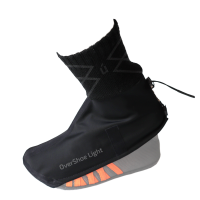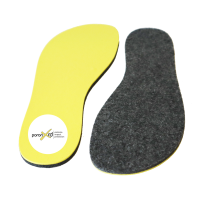Shoe wearing times are changing -
not only the weather, but also our habits are different than 10, 20 or 30 years ago. As early as the 80s, young people began to rebel with their shoes. The sneakers were simply left on, worn through the winter. Cold feet, wet feet - so be it. Fashion and new looks were more important than convenience. The winters have been significantly milder in recent years, snow and precipitation have decreased alarmingly. If you look at people's feet today, you see more low shoes even in the cold season. Wearing high, warm boots is limited to a few days a year. If the winter is very mild, the old boots are not rummaged through at all. I also have boots at home. They have been worn about twenty times in the last 7 years. These faithful companions only found their way to my feet on extremely cold days, on winter holidays in the mountains, when going tobogganing or during wild snow flurries. The rest of the year I wear only two types of shoes, sandals in the summer and my beloved loafers in the other seasons...
I thought about it, looked at people's feet, thought about it and analyzed it. A simple and quick solution would make sense, a kind of overshoe that you could pull over your beloved (barefoot) shoes for a few weeks, especially on snowy or rainy days.
What is now possible with good low shoes? What is my range of motion? Do I really need waterproof shoes? What do you actually need for a shoe? What is important to us and how can you contribute to sustainability and still benefit? How can we support you?
I want to answer these questions in detail:
What is now possible with good low shoes?
Shoe technology has developed significantly in recent years. Above all, the upper materials, processing and manufacturing techniques, sole properties and the associated grip on slippery surfaces are on a whole new level. An example of Vibram® sole technology is the Artic Grip sole. I tested them myself on an extremely slippery surface of ice. The grip is fantastic: with this sole you can run on a frozen lake. There has also been immense progress in the area of outer fabrics, many fabrics are now pre-treated to be hydrophobic as standard. As a result, the water simply rolls off; even after hours of rain, no water penetrates into these outer fabrics. If you drop water on the treated fabrics, it rolls around like marbles on the fabrics - an amazing effect.
Attention, not every low shoe can be used so flexibly...
Some low shoes are practically equipped, have removable replacement insoles or come with warm replacement insoles. Their outer fabrics are usually treated to be hydrophobic or can be expanded and equipped accordingly at any time. You only have to pay attention to certain things when buying. For example, does your (barefoot) shoe have an insole that you can remove? Is there a warm sole as an accessory? Does water roll off the outer fabric? How is the shoe lined, does it even have an inner lining? What does the sole look like, does it have enough profile? How can you find out these important details?
Here are a few tips: Check the insole, also known as the insole or cover sole. Is it removable or glued in place? The more sustainable variant is removable. Just drizzle a little water on the outer fabric and you can see immediately whether your shoe has been treated with a hydrophobic treatment. If the drop of water penetrates directly into the outer fabric, it is not water-repellent. Often the inner lining is made of synthetic fabrics or is missing entirely. Here you can already achieve a lot with warm woolen socks; Above all, wool is still unbeatable in terms of wearing comfort and odor formation. If your cover sole (inner sole) is not glued on, you can replace it.
What is my range of motion?
Ask yourself where you are traveling and what distances you cover in your everyday life. From home, to kindergarten or to school? On the bike or in the car, in the office or at work? Out with the kids or on your own? To go shopping and back again? Do you freeze easily, get cold feet easily or do you often spend the whole day outdoors in winter? Women and men react differently: Women often freeze faster, have cold feet, need warm and cozy feet and like more protection. For men, the classic year-round low shoe with warm socks is often enough.
Do I really need waterproof shoes?
Do not let yourself be influenced too much by marketing campaigns. You should definitely reconsider your strategy, because who walks for hours in heavy rain? In my opinion, you only need waterproof membrane shoes if you do long hikes, extreme runs in mountains and terrain or spend weeks in the far north. For everything else, simple aids and normal means of protection are sufficient, e.g. a good impregnation agent, gaiters, warm socks or insoles. This makes it easy to get through everyday life even in winter. If you want to run even in bad weather, then grab your shoes and start running! You don't notice the wetness when running, because especially in (barefoot) shoes your feet have to work a lot more and your muscles are more strained. This warms up your feet in no time at all and before you even feel the wetness, you've already finished your run and are back home;-). This also works very well on longer distances of up to 25 km.
My tips: If you’re not a forest ranger and you’re not out and about in the forest all day, make sure you have a pair of good low shoes, maybe with a waterproof outer fabric, get warm insoles, cozy socks and a good impregnating agent and he or she is already well equipped. If you are on the go more intensively, you can use legwarmers, gaiters, a gaiter kit or overshoes.
What do you actually need for a shoe?
In one sentence: quality that adapts flexibly to every requirement. A good low shoe, hydrophobic or made of water-repellent leather, plus removable insoles, additional wool insoles, warm socks and, for more intensive use or colder temperatures, cuffs, gaiters, a gaiter kit or shoe covers are usually sufficient for this ;-). Not more...
What is important to us and how can you contribute to sustainability and still benefit?
The large shoe industry now relies on shoes from the printer, on robotics and fully automated production without human intervention. 98% of it is produced in low-wage countries such as China, Taiwan, Thailand, India or Africa. Incidentally, many German and European manufacturers boast about sustainability or CO2 neutrality, but Portugal is a low-wage country in the shoe sector and so the manufacturing company can hardly work CO2 neutral, even if clever marketing wants to make us believe that.
WE RELY ON HONEST AND GENUINE SUSTAINABILITY.
We rely on highly developed craftsmanship from the Black Forest and in perfection. We pay above average & fairly, because life in the Freiburg area must also be possible for employees without any problems. Everything is optimally coordinated with us, every little thing, no matter how small, right down to the yarn. This opens up completely new horizons for us and especially for you. Our shoes can be resoled, the outer fabrics have been specially treated to be hydrophobic, particularly robust and tear-resistant and the shoe uppers can last up to 15 years with good care. This is what we bring you closer to and want to do today and in the future. You can find out a lot more about this topic here.
How can we support you?
We have a super shoe solution for everything and everyone! We offer flexibility in every direction, can cover 85% of the wearing times a year with our low shoe and are currently working intensively on the remaining 15%. 85% means a gestation period from March to December. We make the shoes according to your ideas and respond to every wish. You can choose: upper material, sole and colour, next year also the shoe width. All materials are hydrophobized, especially the calfskin suede. Additives such as wool insoles, waterproofing agents or warm socks can be added at any time. Now is exactly the right time to customize a long-lasting, sustainable shoe for many years to come.
Do you have any questions?
Then feel free to get in touch, preferably by e-mail; You will get our answer within 24 hours ;-).





